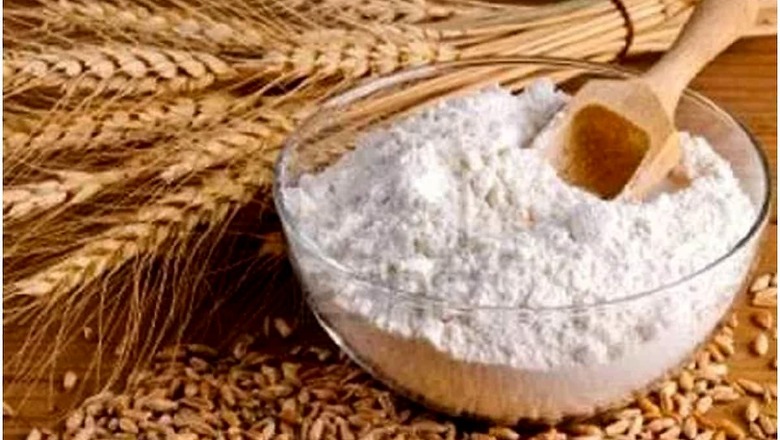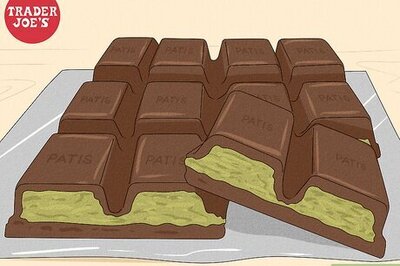
views
Far from knowing which one of the two types of flours is healthier, most young Indians may not even know how to differentiate between atta and maida unless a maternal hand guides them.
Clearing the bases
What may add to the confusion is that both atta and maida are made from wheat grains. Now, to make this a little easier for you, lets first get the basics out of the way. Atta or wheat flour is a basic, milled flour made from whole wheat grains. It’s a combination of the germ, endosperm and bran of wheat grains. Maida or refined flour is made from just the endosperm of whole wheat grains.
As the name suggests, maida or all-purpose flour is highly refined. This is the reason why atta is so much more coarse to the touch, while maida is smooth and fine. While you can easily get whole wheat grains and get them milled locally, the refining process for maida can only be done at specialized mills and factories.
This might also be the reason why atta is considered to be everyday normal within the Indian food culture, while foods prepared with maida are brought out to mark special occasions or more ingratiating/festive cuisines (seriously, we bet you to find one atta-based traditional dish from the Mughlai cuisine).
In comes nutrition
When it comes to nutrition, you need to understand how grains work first. As a study published in Antioxidants in 2013 points out, whole grains are considered to be the healthiest options because they’re packed with dietary fiber, proteins, healthy carbohydrates, vitamins, minerals and loads of antioxidants. Whole wheat flours that are milled just once are the next best thing, so atta is still packed with fiber, proteins, minerals, vitamins, antioxidants and, of course, carbs.
Maida, on the other hand, is super-refined ? a multi-level process that sheds all the fiber, proteins, minerals, vitamins and antioxidants from it. What you’re left with is pure carbs. “Maida has refined or simple carbohydrates and very low amounts of other nutrients, which is really harmful to our body,” says Akanksha Mishra, a nutrition and wellness expert associated with myUpchar. “We ask people to avoid it if you want to control your weight or have obesity, coronary artery disease, diabetes, or prediabetes or any metabolic disorder.”
“On the other hand, whole wheat flour or atta is a good source of complex carbohydrates, protein, fiber, vitamin B1, B3, B5, riboflavin and folate,” she adds. “It also has a good amount of calcium and iron. So, if you are a wheat eater and want to add it in your regular diet, you should go for high fiber whole wheat flour.”
Sure, every bakery or home-cooked dish made with maida is delicious but when it comes to nutrition, the scales are tilted in favour of atta and not maida. So, even though atta and maida come from the same source ? whole wheat grains ? the process through which they’re prepared makes the inclusion of the former in your diet a healthier choice.
For more information, read our article on Grains.
Health articles on News18 are written by myUpchar.com, India’s first and biggest resource for verified medical information. At myUpchar, researchers and journalists work with doctors to bring you information on all things health.
Read all the Latest News and Breaking News here


















Comments
0 comment